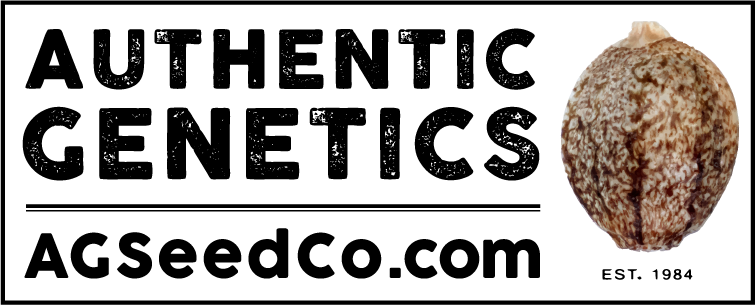
Facts can quickly turn to fiction, especially back before the days of the Internet. With legalization and the stigma slowly being broken, the truth is able to come out of the woodwork and explain on camera (or on paper) what may have been a legend lost in the mists of time.
Books, magazines, and word-of-mouth was really the only verification we had as growers as to what things were called. And if we were told by someone who we trusted, it was gospel and nothing can sway us from it. Until you learn, rather, unlearn something, there can't be any hope of correcting a widely spread lie.
Indica and sativa
A common classification of two types of cannabis in which we call plants that produce narrow or broad leaves and assign effects based on it. The fact of the matter is, when the taxonomy was being written in 1753, Carl Linnaeus was essentially aware of only one type of cannabis: the European Hemp variety (Cannabis sativa).
In 1785, Jean-Baptiste Lamarck published a description of a second species of Cannabis, which he named Cannabis indica.
What we are now learning about the ethnobotany of cannabis is that it is much more than just the two, there is a correct way of describing plant physical characteristics through horticulture taxonomy.
At the time, the names were designated to differentiate how it was being used. Cannabis that was used for industrial purposes, to make paper, ropes, rigging, canvas, clothes, paints and varnishes were given the suffix "sativa", which meant "to sow" or to plant, signifying that it was a useful plant for your garden. Many useful varieties were given the name "sativa", even lettuce, which is technically named: Lactuca sativa.
Cannabis that was coming from India and many other items that originated in India used the term "Indica". But what gets confusing is that there is all types of cannabis growing in India, and leaf morphology does not tell the whole story.
In Northern India along the Hindu Kush mountains, you will find broadleaf drug cannabis and as you travel south to Goa, you will find very narrow leaflet drug plants that are all 100% Indica.
What we have been calling "Sativa" for years, is in fact a Narrow Leaflet Drug-type (NLD), and "Indica" is Broad Leaflet Drug-type (BLD). Drug-type containing the psychoactive THC compounds, whereas Narrow Leaflet Hemp (NLH) and Broad Leaflet Hemp (BLH), do not contain THC.


The only true "sativa", is the European industrial hemp variety that is virtually void of cannabinoids and is grown for its biomass and seeds. Everything else has "Indica" bred into it to give us the cannabinoids we want when we consume it, that goes for CBD as well. CBD rich cultivars are in fact, drug-type plants.
You would be surprised to learn that India had both short, fat-leaved plants and narrow-leaf, taller varieties, due to their location on the Earth. If you go to Northern India, you will find the typical short and bushy fat leaved plants, which is what we normally call Indica. Travel to the Southern tropical peninsula of India, and you would be seeing the narrow-leaved drug varieties, which we would mistakenly call sativa, but they have never been out of that area, and only bred for their medicinal properties, or drug use.
What we really mean by "Indica", is that the plant is Northern and short flowering varieties that have dense nugs to protect from the cold they're used to feeling.
Equatorial or tropical varieties, grow taller, produce spindly buds that allow for air flow to allow moisture to not build up. That's what we falsely call "sativa". This is widely misconstrued and there is no test to say a plant is 75-percent sativa and 25-percent indica. The numbers you are used to seeing are a fallacy.
Leaf structure also does not dictate how the herb will affect you when you smoke it. It's the terpenes that direct how the high affects you, nothing else. Harvest time can dictate effect, just like drying and curing, as it's all about terpene preservation.
Call it what you will now, as the market is misinformed and used to slang. It will take some time getting used to, but this is how we should be referring to our plants from now on.
Refer to Cannabis: Evolution and Ethnobotany by Mark Merlin and Robert C. Clarke for a comprehensive resource of a lifelong study.
Change Strains to Varieties and Cultivars
Another one that has had us for the longest time, was calling cannabis varieties and cultivars "strains". Even worse, "strands". This is still just as far off as calling a cheetah a tiger, simply because they're both cats. We have to take a further look at the words for what we're talking about.
The word "strain" is widely used, but it comes from microbiology and describes a genetic variant or subtype of a bacteria, fungus or virus. Since we are not talking about either of those, our communication about horticulture has to be consistent. "cultivar" is the correct term, as it is defined by the phenotype versus the genotype. "variety", or "cross" are still better terms than "strain", as it's an honest description of what took place, but sometimes less specific. When you sprout twenty seeds of a certain variety, those seedlings are crosses, and then each will be its own cultivar.
Let’s ditch “sativa and indica” like we left behind words like "marijuana" and "reefer". Stop saying "strains" because it's not bacteria we're smoking. It's not hard to learn the correct nomenclature once you know what the words mean.

